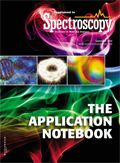The Moxtek ICE Cube Polarizing Beamsplitter
Application Notebook
A broadband polarizing beamsplitter (PBS) cube was developed using embedded Moxtek Nanowire grid polarizer technology.
A broadband polarizing beamsplitter (PBS) cube was developed using embedded Moxtek® Nanowire® grid polarizer technology. The Moxtek ICE Cube™ PBS provides superior performance in broadband, low f/# spectroscopic applications where both high efficiency and excellent contrast are required.
Cube beamsplitters are found in a variety of spectroscopic applications where matching path lengths, reduced ghosting, and limited beam shift are important. Polarizing beamsplitter cubes are found in phase-shifting laser interferometers, polarization sensitive optical coherence tomography, and polarization sensitive white light interferometry. PBS cubes are often used for applications that require compact designs and reduced mechanical vibration. Typically MacNeille cubes have been used for many PBS applications, but for low f/#'s (large cone angles), the color balance and the contrast ratio between passing and blocking state transmittance have been less than ideal. On the contrary, wire grid polarizers (WGP) are known for excellent broadband performance in low f/# applications. By incorporating a WGP along the hypotenuse of a cube beamsplitter, the Moxtek ICE Cube provides a superior PBS in low f/# applications.
Experimental Conditions
As depicted in Figure 1a, a white light LED source was collimated and passed through an iris followed by a high contrast pre-analyzer to select an input polarization state. The beam was then focused into Moxtek and MacNeille Cube beamsplitters and the blocking state transmittance (Ts) was minimized on a screen. The blocking state reflectance and transmittance were then imaged using a camera, as was the passing state transmittance and reflectance (after rotating pre-analyzers by 90°). In both cases the aperture was varied to change the f/#, and the images were taken at about f/1.2 cone angle.

Figure 1: Low f/# performance comparison between polarizing beam splitter cubes. Measurement schematic (a) and results (bâc) showing blocking state transmittance (Ts) and reflectance (Rs) for MacNeille Cube (b) and Moxtek ICE Cube (c).
Results
As shown in Figure 1, the ICE Cube (Figure 1c) has improved color balance and a reduced leakage in the blocking state (Ts) when compared to the MacNeille cube (Figure 1b). Both cubes were also characterized at variable angles with well collimated light from the UV to the SWIR. The Moxtek ICE Cube outperformed the MacNeille cube, accommodating angular deviations from normal incidence of ±20° in the azimuthal direction and ±10° in the polar (elevation) direction with minimal performance variation.
Conclusions
The Moxtek ICE Cube beamsplitter with embedded nanowire grid polarizer provides superior broadband performance over a wide angular aperture, with none of the dramatic color shifts and angular performance variations evident in MacNeille cube beamsplitters. While MacNeille cube designs can typically only tolerate a narrow angular aperture before performance deteriorates, the Moxtek ICE Cube accommodates a much larger angular field of view, allowing the optical designer to maintain system performance in broadband spectroscopic applications with demanding form factors.
Moxtek, Inc.
452 West 1260 North, Orem, UT 84057
tel. (801) 225-0930, fax (801) 221-1121
Website: www.moxtek.com

Thermo Fisher Scientists Highlight the Latest Advances in Process Monitoring with Raman Spectroscopy
April 1st 2025In this exclusive Spectroscopy interview, John Richmond and Tom Dearing of Thermo Fisher Scientific discuss the company’s Raman technology and the latest trends for process monitoring across various applications.
A Seamless Trace Elemental Analysis Prescription for Quality Pharmaceuticals
March 31st 2025Quality assurance and quality control (QA/QC) are essential in pharmaceutical manufacturing to ensure compliance with standards like United States Pharmacopoeia <232> and ICH Q3D, as well as FDA regulations. Reliable and user-friendly testing solutions help QA/QC labs deliver precise trace elemental analyses while meeting throughput demands and data security requirements.